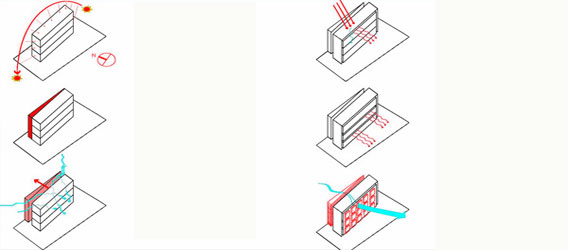 |
| How to Figure Compression Strength of Concrete |
Building professionals perform concrete compression tests to identify the compressive strength of concrete used in structures, pavement and other applications. Compressive strength is a quality control indicator used to ensure uniform quality and adequate strength for its intended application. Design engineers specify acceptance criteria of compressive strength testing, based on established industry standards. Project personnel send samples to off-site facilities where certified technicians determine compressive strength under controlled conditions.
Instructions
1. Compressive Strength Test Procedure
1- Obtain concrete cylindrical core samples. Prepare each core for compression testing. Measure the length of each core. Adjust the core length to obtain a length-to-diameter ratio of 2.0. Prepare core ends so that no projections exceed 0.2 inches, the core is perpendicular to the longitudinal axis, within a 0.5 degree tolerance. This is about 1/16 inch per 12 inches.
2- Measure the diameter of each cylinder with calipers. Measure the core at mid height in two directions, at right angles to one another. If the two measurements vary by more than 2 percent, the cylinder should not be tested. Add measurements together and divide by two to obtain the average diameter (d). Ensure the diameter of each end is no more than 0.1 inch from the mean diameter of the core. Cap the core with a sulphur or neoprene cap, as directed. Ensure that core remains moist after capping.
3- Verify that the testing machine is power operated, calibrated and can apply a continuous load. Check that the initial setting is zero before testing. Adjust as needed. Ensure the upper bearing block moves freely and rotates to contact core.
4- Wipe clean the lower and upper bearing block surfaces and bearing faces of the core. Place the core in the lower bearing block, centering its vertical axis under the upper bearing block. Verify that the machine load indicator is zero. Adjust as needed.
5- Apply compressive load continuously and without shock. Hydraulic machines should apply loads at 35 plus or minus 7 pounds per square inch per second (psi/s). Apply load until machine indicates decreasing load and the core demonstrates complete failure by a defined fracture.
6- Record the maximum load (L) attained prior to core failure. Record the type of fracture as directed.
2. Compressive Strength Calculation
7- Determine the average cross-sectional area of the cylindrical core. Multiply the average diameter of the core obtained earlier(d) by 0.5 to obtain the average radius(r).
r=0.5d
8- Multiply the average radius by itself to obtain its square. (r * r)
9- Multiply this amount by π, or about 3.14. This is the average cross-sectional area. (A)
10- Calculate the compressive strength (C) of the core by dividing the maximum load (L) by the cross sectional area (A). C=L/A
11- Record the calculated compressive strength to the nearest 10 pounds per square inch (psi).

















